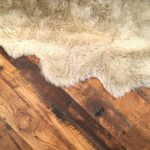A safe is a simple and effective way to protect your belongings. However, there’s one important factor that many safe owners forget – securing it. A safe is no use if it can be simply lifted off the floor, and carried away.
The best way to secure a safe is bolting it to the floor. However, in many cases this just isn’t an option. Whether you live in an apartment, rent, or just move house often, bolting is not a feasible solution.

But that doesn’t mean there’s nothing you can do. Bolting may be the best option, but it definitely isn’t the only way. We’ve put together some ways to secure a safe that don’t require drilling through the floorboards.
Why You Should Secure Your Safe
It’s easy, once you’ve got your safe set up, to sit back and congratulate yourself on a job well done. And while buying a safe is a fantastic first step towards security, it isn’t the only thing you need to do.
Even the most high-tech, highly protected home safe has one fatal flaw – it can be carried away. The chances are, if you can get the safe into your home, it’s light enough to carry back out.
The best way to prevent this from happening is to secure the safe. Bolting it to the floor is ideal, because it offers a strong, long term solution. However, in many homes this simply isn’t possible. Instead, you need to find an innovative way to keep your safe secure.
How To Secure A Safe Without Bolting It To The Floor
Bolt The Safe To The Wall
Sometimes, apartments or rental buildings will have strict rules against drilling into the floor, but will be more forgiving about bolting things to the wall. If this is possible, then it’s the best option. Bolting the safe to a wall provides effective protection against theft.
To do this, the method is similar to bolting the safe to the floor:
- Choose an area to secure your safe. It should be at the bottom of the wall, flush to where it joins the floor. A concrete or brick wall is best, as it provides a solid base. If the safe rests against a skirting board, this section needs to be cut away. Similarly, if the safe is against a carpet, it’s best to cut a space. The safe needs to be as flush to the wall and floor as possible.
- Position your safe, ensuring that the door can open freely.
- Mark out where the pre-drilled holes are on the wall.
- Use a masonry drill bit to make the holes in the wall. Start small, and then switch to larger.
- Put the safe in place, flush to the wall. Use a hammer and screwdriver to secure anchor bits.
Bolt The Safe To A Steel Slab
This is a very popular method, as it requires few tools and does no damage to the living space. By securing the safe to a steel slab, the safe becomes difficult to move. The heavy and cumbersome steel acts as a deterrent.
- Choose a thick steel slab. Over ¼ inches is best. It also needs to be larger than the door frame, so thieves can’t just walk out.
- Find a suitable place to place the safe/steel slab. Remember, once it’s down, it will be incredibly difficult to move.
- Mark out where the boltholes on the safe coincide with the steel slab. Use an electric drill to create the holes in the steel.
- Use a hammer or screwdriver to secure the anchor bits through the safe and the steel.
Add Weight To The Safe
Adding weight to the safe is the easiest method, and it has no impact on the property. By adding weights to the safe, it becomes too heavy to pick up. If you only need a small safe, weights ensure minimal damage, and require no effort.
Objects from the home can be used to add weights, such as dumbbells. However, avoid anything that will take up too much room. Thin weights can often be purchased from DIY stores, and can fit easily into the base of a safe.
Glue The Safe To The Floor
Gluing the safe to the floor is a low effort option that delivers some surprisingly impressive results. Just make sure to take care when sticking, and always use the right type of glue.
If you want to glue the safe to the floor, it needs to be a high-strength polymer glue. This will form an incredibly strong bond, making the safe almost impossible to move. Then, as necessary, glue remover can be used to break the bond, and release the safe.
- Choose the area to keep the safe. Mark out this area using tape.
- Apply the glue within the area. Use small dots, and spread them outward using a scraper. Only a thin layer is necessary. Avoid getting the glue outside the marked area.
- Carefully place the safe on top of the glue. Press down gently, and then leave for several hours while the glue gets too work.
Hide The Safe Under The Floorboards
Under the floorboards is such a classic hiding place, few of us ever consider it as a real option. However, if you have a wooden floor, this is a great way to secure the safe. The main disadvantage is that the safe becomes difficult for you, the owner, to access.
Although it is possible to accomplish this yourself, it’s better to contact a professional. They can easily lift the floorboards, and replace them, without causing damage.
Final Thoughts
Whether you’re experimenting with glue or stacking up the weights, securing a safe is an important step to ensuring the protection of your belongings. With the safe secured, it becomes impossible for thieves to simply carry away.
Securing a safe doesn’t have to be difficult. Although bolting it to the floor is the best option, it isn’t your only choice. Instead, choose the nontraditional method that works for you.










